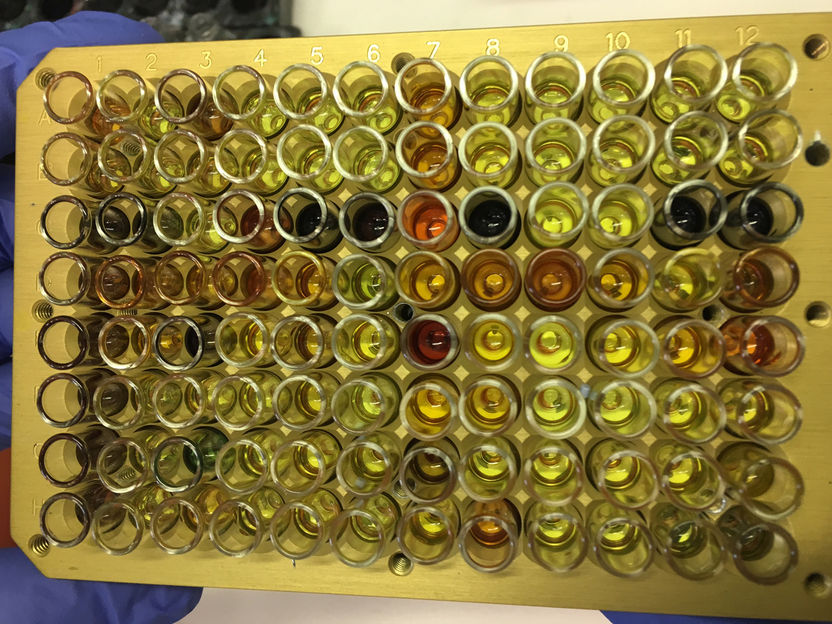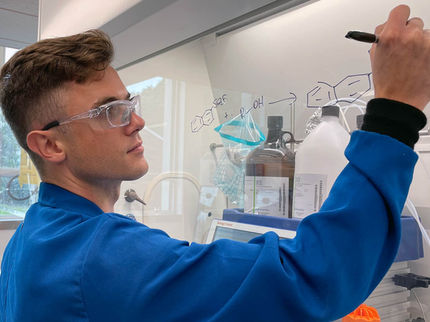Chemists present new reaction path
Symmetrical cleavage of disulphides is fast and biocompatible
Advertisement
A team of researchers led by Prof. Frank Glorius and Michael Teders from the University of Münster and by Prof. Dirk Guldi from the University of Erlangen-Nuremberg have presented a new chemical reaction path which may prove to be of interest both for research and for the production of active ingredients in medicines. The new reaction leads to a splitting of bonds between two sulphur atoms. The chemists use a light-driven catalysis method (photocatalysis) to enable it.

The team of researchers led by Frank Glorius uses photocatalysts and visible light for the selective cleavage of sulphur-sulphur bonds. The colour of the reaction mixture after the reaction can give a first indication of the products formed (the photo shows a plate with different reaction mixtures).
© WWU/Michael Teders
The benefits of the new reaction are that it occurs very fast (“click chemistry”) and is particularly exact. The symmetrical cleavage of disulphides, i.e. of molecules with bonds between two sulphur atoms, gives rise to products which could be used for a variety of applications. “These so-called thiyl-sulphur radicals could be used to produce medicines, for example, or crop protection products or polymers,” says Frank Glorius from the Institute of Organic Chemistry at Münster University.
To enable the reaction, the Münster researchers use a special molecule which absorbs the energy from visible light, stores it and then transfers it to a molecule directly involved in the reaction. This process, in which the molecules transfer electrons reciprocally, is known as energy transfer. In contrast to the one-sided transfer of electrons, this method is not very widespread in light-driven photocatalysis. The team led by Dirk Guldi at the University of Erlangen-Nuremberg elucidated the molecular mechanism of the energy transfer using ultrafast spectroscopy. During this process, very short laser flashes make the molecular properties and changes during a chemical reaction visible.
One characteristic of the new reaction path which is of interest to biochemists is its biocompatibility. In other words, it can potentially be performed in living cells without causing any damage to them. The reverse is also true: there is no adverse effect on the reaction from any components of the cells. This makes the reaction path interesting for possible applications in molecular labelling chemistry – making biomolecules in living cells visible in order to observe biological processes. The biocompatibility of the energy-transfer method was evaluated at Münster University by the research teams led by Frank Glorius and biochemist Andrea Rentmeister, a professor at the “Cells in Motion” (CiM) Cluster of Excellence. For their evaluations, the teams used a new kind of screening method in which they individually added to the reaction mixture numerous biomolecules present in the cell, in order to study their effects in each case. Also, they looked to see what effects the totality of the biomolecules in the cell had on the reaction.





























































